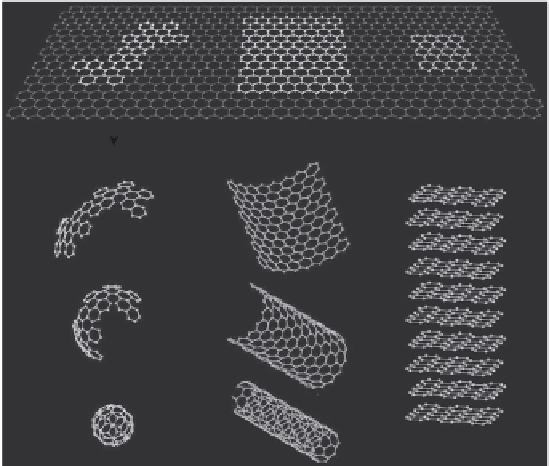Civil Engineering Reference
In-Depth Information
binder, a polymer coating solution, or a monomer solution prior to polym-
erization. The latter process can be used to produce master batches of
concentrated nanoparticles in resin, which can subsequently be mixed with
clear resin to prepare thin polymer foils doped with nanoparticles by extru-
sion. These foils can then be stuck onto surfaces or positioned between clear
sheets. Nanoparticle-doped polymer sheets and other shapes of plastic can
also be made by injection moulding and extrusion from suitable resins. If
dilute coatings are needed, it is important to make sure that the particles
are dispersed, which usually requires a surfactant (i.e., a 'soap' type mole-
cule) on their surface to ensure that they do not stick together.
Carbon-based nanomaterials deserve particular attention and have
undergone phenomenal development during recent years. Figure 8.13 illus-
trates how different nanostructures can be created from a two-dimensional
arrangement of carbon atoms to yield C
60
units (known as 'buckminster-
fullerene molecules' or 'buckyballs'), long nanotubes with metallic and
semiconducting properties, and graphene (two-dimensional graphite-like
sheaths) (Geim and Novoselov, 2007).
Long nanoparticles can be prepared not only from carbon, as indicated
in Fig. 8.13, but from many materials. Figure 8.14 illustrates an example
of Ag nanowires that can be made from potentially inexpensive reduction
of liquid silver nitrate to make electrically conducting and transparent
8.13
Schematic rendition of carbon-based nanostructures and of their
formation. From Geim and Novoselov (2007).














Search WWH ::

Custom Search